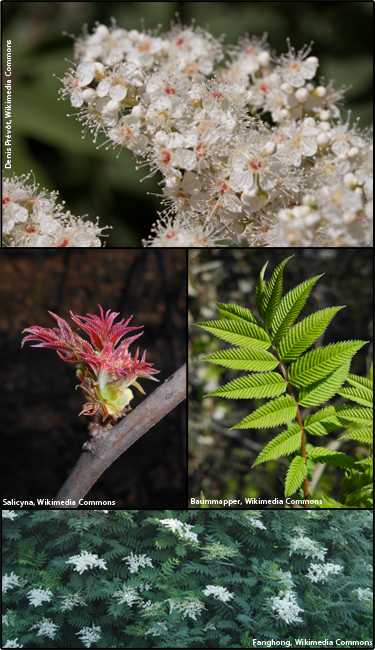False spiraea (Sorbaria sorbifolia)
 Synonyms: Schizonotus sorbifolius, Sorbaria sorbifolia var. stellipila, Spiraea sorbifolia
Synonyms: Schizonotus sorbifolius, Sorbaria sorbifolia var. stellipila, Spiraea sorbifoliaDescription: First collected in 1914 in St. Clair and Washtenaw Counties in Michigan.
Habit: Erect, multi stemmed, colony forming shrub that can reach heights of 5-10 feet.
Leaves: Alternate, pinnately compound, 12 inches long, 12-25 leaflets. Leaflets are 4 inches long and 1 inch wide, double serrated pointed margins.
Stems: Pink to green in color and slightly pubescent when young becoming grayish-brown and smooth.
Flowers: Showy clusters, small, white in color, borne in dense cone-shaped panicles, 4-10 inches long.
Fruit and seeds: Dehiscent fruit capsule.
Habitat: Native to Asia. Can be found along roadsides, banks, field edges, old homesites.
Reproduction: By seed and vegetatively by suckers forming large colonies.
Similar species: Mountain ash (Sorbus spp.), which has similar foliage.
Credits: The information provided in this factsheet was gathered from The Morton Arboretum and the University of Michigan Herbarium.
Individual species images that appear with a number in a black box are courtesy of the Bugwood.org network (http://www.invasive.org).Individual photo author credits may not be included due to the small display size of the images and subsequent difficulty of reading the provided text. All other images appear courtesy of Google (http://images.google.com).
